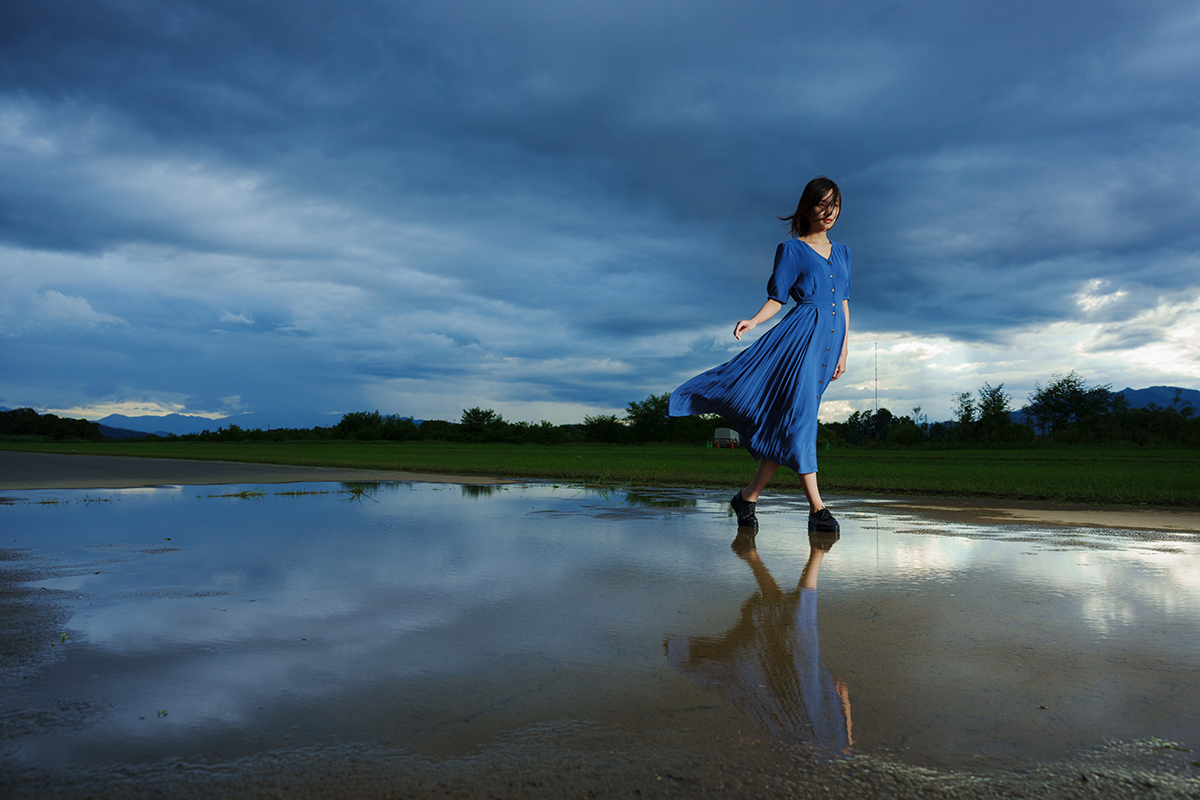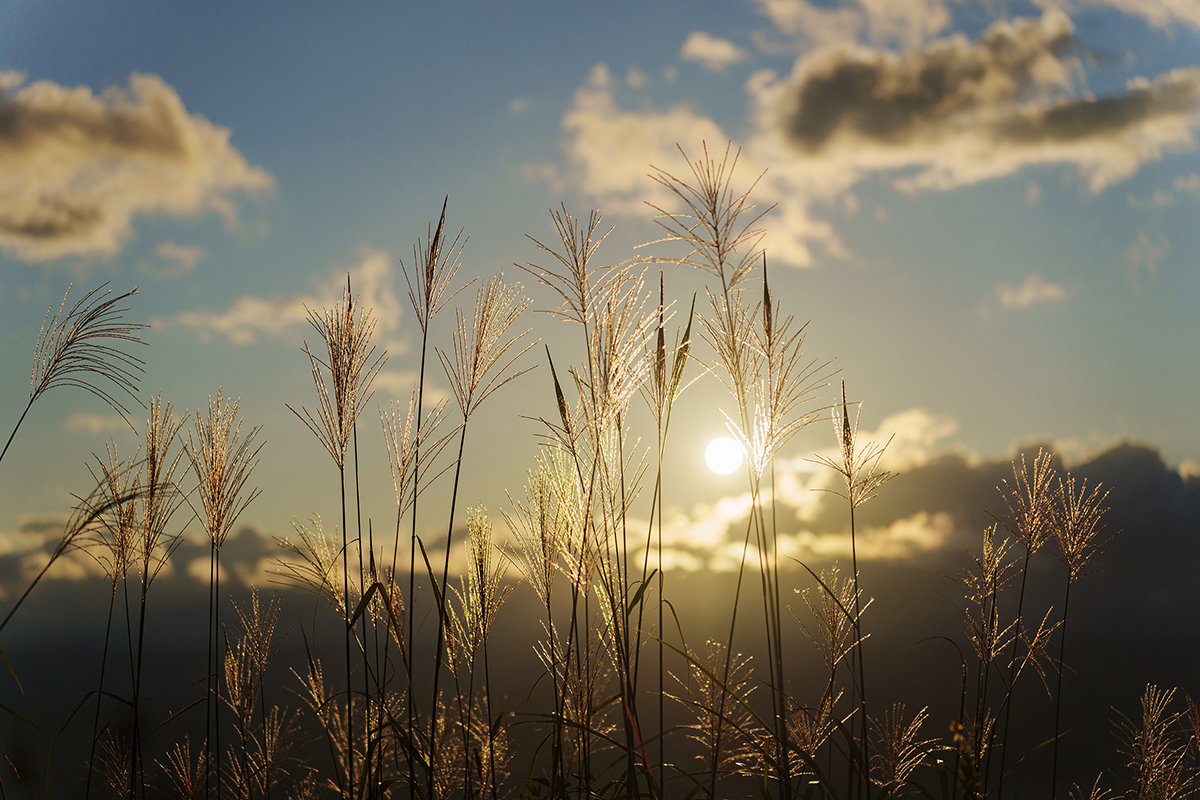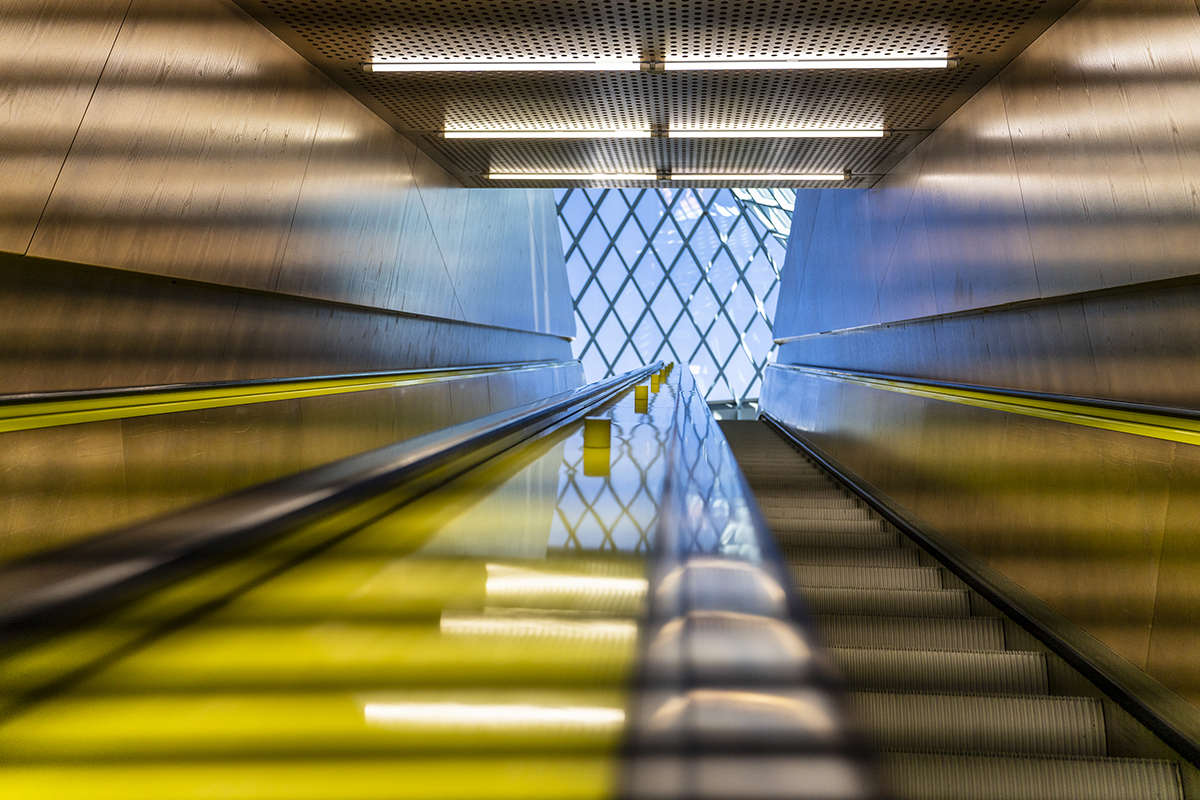As técnicas de composição para aspirantes a fotógrafos estão no centro de uma ótima fotografia, e dominá-las pode transformar uma foto comum em uma poderosa história visual. Independentemente de você estar capturando paisagens deslumbrantes ou retratos íntimos, a lente certa desempenha um papel crucial no enquadramento de sua visão.
O Tamron 28-75 mm F/2.8 Di III VXD (modelo A063) A lente Tamron 28-75 mm, com sua faixa focal versátil e qualidade óptica excepcional, é uma ferramenta perfeita para fotógrafos que desejam explorar a arte da composição. Nesta postagem, abordaremos as principais técnicas de composição e mostraremos como a Tamron 28-75 mm, disponível para câmeras full-frame sem espelho de montagem Sony E e Nikon Z, pode ajudá-lo a criar imagens equilibradas e atraentes em uma variedade de cenas.
Neste artigo, você aprenderá:
- Técnicas essenciais de composição para aspirantes a fotógrafos
- Como usar a Regra dos Terços, a Hora Dourada e outros métodos comprovados
- Maneiras de criar impacto visual usando enquadramento, repetição e diagonais
- Os benefícios da lente Tamron 28-75 mm F/2.8 para montagens Sony E e Nikon Z
A regra dos terços

A Regra dos Terços é uma das técnicas de composição mais fundamentais e amplamente utilizadas pelos aspirantes a fotógrafos. Ela envolve dividir mentalmente o quadro em nove partes iguais, desenhando duas linhas horizontais igualmente espaçadas e duas linhas verticais na imagem. Ao posicionar o tema ao longo dessas linhas ou em suas interseções - em vez de centralizado -, você cria composições mais dinâmicas, equilibradas e visualmente atraentes.
Esse método incentiva os olhos dos espectadores a se moverem naturalmente pelo quadro, o que aprimora a narrativa e mantém a atenção do espectador por mais tempo. É especialmente eficaz em fotografias de paisagens, retratos e ruas, em que o posicionamento do tema pode influenciar drasticamente o humor e a mensagem.
Dica profissional:
Ative a sobreposição de grade da câmera para praticar o alinhamento dos elementos principais com as linhas e interseções dos terços. Essa ferramenta simples é inestimável quando se aprende a treinar seu olho para obter uma melhor composição e melhorará significativamente seus resultados na câmera, reduzindo a necessidade de cortes pesados durante a edição.
Hora de Ouro

A Golden Hour é uma hora do dia muito apreciada pelos profissionais e uma das técnicas de composição mais acessíveis e impactantes para os aspirantes a fotógrafos. Ela se refere à breve janela logo após o nascer do sol e logo antes do pôr do sol, quando o sol está baixo no céu e lança uma luz quente e difusa sobre a paisagem.
Essa luz natural é mais suave e mais lisonjeira do que o sol forte do meio-dia, reduzindo as sombras e criando uma tonalidade dourada que acrescenta humor, profundidade e dimensão às suas imagens. Seja para fotografar paisagens, retratos ou cenas urbanas, a Golden Hour oferece condições ideais de iluminação que aprimoram as cores e as texturas, fazendo com que suas fotos pareçam mais refinadas e profissionais logo que saem da câmera.
Dica profissional:
Planeje sua sessão de fotos com antecedência usando aplicativos de clima ou ferramentas de fotógrafo como PhotoPills ou calculadoras de Golden Hour para saber exatamente quando a luz estará ideal no local. Chegar 30 minutos mais cedo dá tempo para compor sua foto e aproveitar ao máximo essa luz fugaz, porém mágica.
Preenchendo a moldura

Preencher o quadro é uma abordagem poderosa e direta que enfatiza o tema ao permitir que ele domine a composição, ocupando a maior parte ou todo o espaço da imagem. Essa técnica elimina efetivamente as distrações do plano de fundo, garantindo que a atenção do espectador seja atraída diretamente para os elementos principais da foto. É especialmente eficaz para retratos, vida selvagem, natureza morta e fotografia macro, em que os detalhes são essenciais.
Como uma das técnicas de composição mais impactantes para aspirantes a fotógrafos, o preenchimento do quadro aumenta a intensidade visual e cria uma sensação de intimidade ou imediatismo. Ele também incentiva os fotógrafos a serem mais intencionais com o enquadramento e a perspectiva, ajudando-os a desenvolver um olhar mais aguçado para a narrativa visual.
Dica profissional:
Não tenha medo de se aproximar do objeto ou de usar uma lente zoom como a Tamron 28-75 mm F/2.8 para cortar bem. Isso minimiza o espaço negativo e realça a textura, a emoção e os detalhes finos que, de outra forma, poderiam passar despercebidos.
Repetição

A repetição é uma abordagem criativa e visualmente atraente que usa padrões, formas, cores ou objetos recorrentes para criar estrutura e ritmo em uma fotografia. Ao atrair a atenção do observador para os elementos repetidos, essa técnica acrescenta equilíbrio, fluxo e harmonia à composição, fazendo com que até mesmo cenas simples pareçam dinâmicas e intencionais.
Como uma das técnicas de composição mais artísticas para aspirantes a fotógrafos, a repetição o incentiva a observar o ambiente mais de perto. Detalhes arquitetônicos, fileiras de árvores, pilhas de objetos ou padrões na natureza apresentam oportunidades para incorporar a repetição e elevar o interesse visual de suas imagens.
Dica profissional:
Quebre o padrão deliberadamente introduzindo um único elemento que contraste com a repetição, como uma pessoa em uma fileira de janelas idênticas. Essa técnica, chamada de "quebra de padrão", chama ainda mais a atenção e cria um ponto focal poderoso em uma cena repetitiva.
A regra das probabilidades

A Regra das Probabilidades é um princípio convincente na composição visual que sugere que as imagens são mais interessantes e esteticamente agradáveis quando contêm um número ímpar de objetos - normalmente três, cinco ou sete. O cérebro humano tende a agrupar objetos de número par em pares, o que pode criar uma sensação de simetria e fechamento. Por outro lado, os números ímpares estimulam o olho do observador a se movimentar pelo quadro, criando mais tensão, equilíbrio e envolvimento visual.
Como uma das técnicas de composição menos conhecidas, porém eficazes, para aspirantes a fotógrafos, a Regra das Probabilidades é particularmente poderosa em gêneros como fotografia de alimentos, natureza morta, natureza e minimalismo. Ela acrescenta um senso de naturalidade e espontaneidade que pode fazer com que suas composições pareçam mais orgânicas e intencionais.
Dica profissional:
Ao aplicar a Regra das Probabilidades, organize seus elementos com variação de espaçamento e tamanho para evitar uma aparência rígida ou excessivamente estruturada. Use a visualização prévia do LCD ou a visualização ao vivo da sua câmera para ajustar o layout antes de capturar a foto.
Diagonais

A incorporação de linhas diagonais em suas imagens é uma excelente maneira de criar uma sensação de movimento, profundidade e energia. As composições diagonais conduzem o olhar do espectador através do quadro, proporcionando tensão dinâmica e um forte fluxo visual que as linhas verticais ou horizontais geralmente não têm. Sejam elas formadas por estradas, sombras, cercas ou elementos naturais como rios e galhos de árvores, as diagonais introduzem dimensão e guiam a atenção para o tema.
Para aqueles que estão explorando técnicas de composição para aspirantes a fotógrafos, o uso de diagonais é uma maneira eficaz de evitar imagens estáticas e planas e, em vez disso, injetar uma qualidade viva e narrativa em seu trabalho. As diagonais também podem ajudar a dividir o quadro de forma criativa, enfatizando o contraste e o equilíbrio na cena.
Dica profissional:
Use o intervalo de zoom da Tamron 28-75 mm F/2.8 para fazer experiências com perspectiva - fotografe de ângulos altos ou baixos para acentuar as linhas diagonais em seu ambiente. As diagonais principais que convergem em direção ao objeto são especialmente impactantes.
Moldura

O enquadramento é uma técnica de composição que usa elementos do ambiente - como janelas, portas, galhos ou arcos - para envolver ou cercar o tema principal. Esse método não apenas chama a atenção diretamente para o ponto focal, mas também acrescenta contexto e camadas à sua imagem, tornando-a mais imersiva e visualmente atraente.
Entre as técnicas de composição mais criativas para aspirantes a fotógrafos, o enquadramento é uma ferramenta valiosa para contar histórias. Ele acrescenta profundidade, isola o tema das distrações e, muitas vezes, evoca um senso de lugar ou emoção. O enquadramento pode ser literal ou abstrato, mas quando bem feito, ele aumenta a clareza e o impacto.
Dica profissional:
Use elementos naturais ou arquitetônicos para criar um efeito de quadro dentro do quadro. Um leve reposicionamento ou zoom com a lente pode ajudá-lo a alinhar esses elementos com precisão, permitindo que o tema se destaque e, ao mesmo tempo, ancore o observador na cena.
Técnicas de composição para aspirantes a fotógrafos: Uma base
Todas as imagens apresentadas neste artigo foram tiradas com o Lente Tamron 28-75 mm F/2.8 G2O sistema de composição é uma ferramenta versátil para capturar uma grande variedade de assuntos. Essas técnicas de composição para aspirantes a fotógrafoss As lentes Tamron oferecem uma base sólida para o crescimento artístico e uma narrativa mais convincente por meio de imagens. Visite a Tamron Americas hoje mesmo para obter mais dicas de fotografia e descobrir como a lente certa pode ajudá-lo a capturar a foto perfeita todas as vezes.
Saiba mais sobre essas lentes e muito mais em um revendedor autorizado Tamron em sua área ou visite o site Loja TAMRON hoje.
Mais dicas de fotografia | Assistir a vídeos | Saiba mais sobre as lentes Tamron | Galeria de fotos
